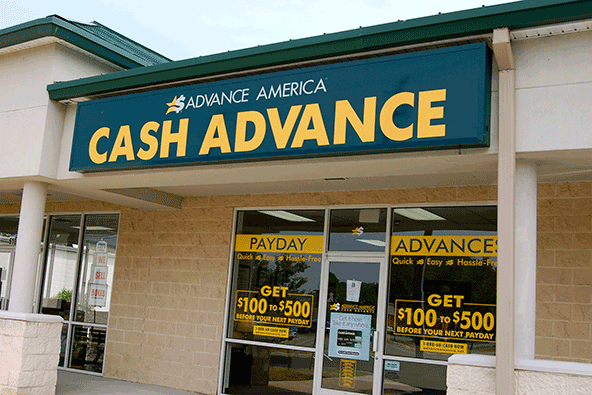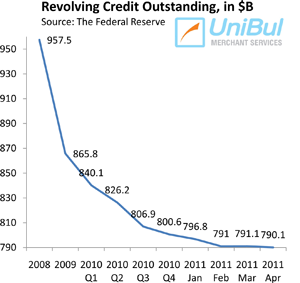The Payday State of the Union

Payday lending has been a frequent news item over the past six months or so and for all the wrong reason. Well, it is true that payday lenders have never had it easy, but in August of last year their luck, such as it was, took a turn to the worse, much worse. Back then, the short-term lending business came suddenly under heavy pressure from a number of states, led by New York, whose Attorney General Eric Schneiderman filed a law suit charging one lender in particular — Western Sky Financial — with levying excessive interest rates of more than 300 percent, in violation of the state’s law that limits interest at 25 percent. As a result, Western Sky Financial was forced to stop financing loans in September, as did all but its bravest rivals (actually, I don’t think anyone still lends in New York).
Soon afterward, the payday industry took another heavy blow. One of the country’s largest processors of electronic check payments announced that it would no longer service its payday clients and cut all of them loose. Suddenly, dozens of the country’s biggest lenders found themselves unable to service their customers.
Then came my personal favorite episode of the saga. The Archbishop of Canterbury, Justin Welby, decided to take the contentious matter of short-term lending and high interest rates into God’s his own hands and announced a plan (well, more of a wish) to set up a network of credit unions to compete with the ungodly payday lenders. While the Archbishop didn’t exactly lay out a specific plan of action, he did inform his new rivals that “we’re not in the business of trying to legislate you out of existence, we’re trying to compete you out of existence”. Yet, much to the Archbishop’s bemusement, one presumes, the lenders didn’t even acknowledge his threat, never mind taking defensive measures against it. Strange to say, several months later, the Archbishop’s plan is still a mystery.
Six months on, nothing in the U.S. payday world is settled. Law suits are still being litigated and new ones are filed left and right. Yet, in one respect at least, we have made significant progress. New and reliable payday processing solutions have been designed to allow lenders to do their business and at UniBul we have built a couple of solid, functioning ACH processing facilities that are independent of each other. So far we have enabled half a dozen big lenders to process their debit and credit transactions and are currently working with three others.
But today I’d like to direct your attention to the latest data on the state of payday lending in the U.S., as compiled and presented to us by The Pew Charitable Trusts. It is an excellent report, so let’s get through it.
The Payday State of the Union
Pew’s?áSafe Small-Dollar Loans Research Project?áis focusing on, as its name implies, small-dollar credit products such as payday and automobile title loans, as well as emerging alternatives. We recently reviewed a report, which told us that about 15 million Americans are taking out payday loans, pawn loans, deposit advance loans, auto title loans and non-bank installment loans every year and their number is growing. Tens of millions more use sub-prime credit cards, checking account overdrafts and other expensive types of credit. So this is a big and growing market.
Well, Pew has classified the U.S. states into three categories, based on their payday loan regulations: Permissive, Hybrid and Restrictive. Here is what defines each of these three groups.
Restrictive states are those which either do not permit payday lending at all or have low enough limits on interest rates to effectively eliminate payday lending in the state. This rate cap is often 36 percent Annual Percentage Rate (APR), we learn. Typically, payday loan store-fronts are not found in these states.
This group includes states where deferred presentment transactions (i.e. post-dated checks) are not authorized, are not specifically exempted from general state laws on usury or are explicitly banned by state statute.
There are 14 states and the District of Columbia which have a Restrictive payday loan regulatory structure and twenty-nine percent of Americans live in them. Virtually the whole Northeast of the country falls into this category, but here is the full list:
- Arkansas
- Arizona
- Connecticut
- District of Columbia
- Georgia
- Maryland
- Massachusetts
- Montana
- New Hampshire
- New Jersey
- New York
- North Carolina
- Pennsylvania
- Vermont
- West Virginia
Hybrid states have relatively more exacting requirements, the Pew researchers tell us, with at least one of the following three forms of regulation:
- Rate caps, typically around 10 percent of the borrowed principal, which are lower than most states but still allow loans to be issued with triple-digit APRs.
- Restrictions on the number of loans per borrower, say, a maximum of eight loans per borrower per year.
- Allowing borrowers multiple pay periods to repay their loans.
Store-fronts which offer payday loans exist in substantial numbers in these states, we are told, even though the market may be more consolidated and the per-store loan volume may be higher in these states than it is in less restrictive ones.
In all, there are eight Hybrid states, in which live sixteen percent of all Americans. Florida is the biggest Hybrid state and here is the full list:
- Colorado
- Florida
- Maine
- Minnesota
- Oregon
- Rhode Island
- Virginia
- Washington
Permissive states are the least regulated ones in the U.S. and allow initial fees of 15 percent of the borrowed principal or higher. Most of these states have enacted some regulations, we learn, but nevertheless allow for payday loans due in full on a borrower’s next payday to have APRs that are usually in the range of 391 to 521 percent ($15 to $20 per $100 borrowed for a two-week loan). Payday loan store-fronts are readily available to borrowers located in these states.
There are 28 Permissive states in the U.S., in which live 55 percent of the population. Texas and California, the most populous states, are both in this group and here is the full list:
- Alabama
- Alaska
- California
- Delaware
- Hawaii
- Idaho
- Illinois
- Indiana
- Iowa
- Kansas
- Kentucky
- Louisiana
- Michigan
- Mississippi
- Missouri
- Nebraska
- Nevada
- New Mexico
- North Dakota
- Ohio
- Oklahoma
- South Carolina
- South Dakota
- Tennessee
- Texas
- Utah
- Wisconsin
- Wyoming
Payday Lending State-by-State
Nationally, the average usage rate for payday loans is 5.5 percent, we learn, but from state to state usage varies from?á1?ápercent to 13 percent.?áFurthermore, usage rates also vary by law type and?áare 6.6?ápercent?áin Permissive states, 6.3?ápercent?áin Hybrid states and only 2.9?ápercent?áin Restrictive states.
However, in contrast to store-front borrowing, the rate of web-based and other non-store-front borrowing does not vary significantly by state law type. Here you will find a top-line breakdown of each state’s payday regulatory structure.
Pew has also created a wonderful interactive payday map of the U.S., which I have embedded for you below. You can roll over the map to see each state’s usage rate and, by clicking on individual states, you can read a summary of their payday lending laws. A truly wonderful resource! (The data below may not correspond to the statistics I’ve just presented in this post. Pew continually updates its database and this is a fluid industry, so what was true in February 2014 may be divorced from reality even a month later!)
Image credit: Flickr / taberandrew.


